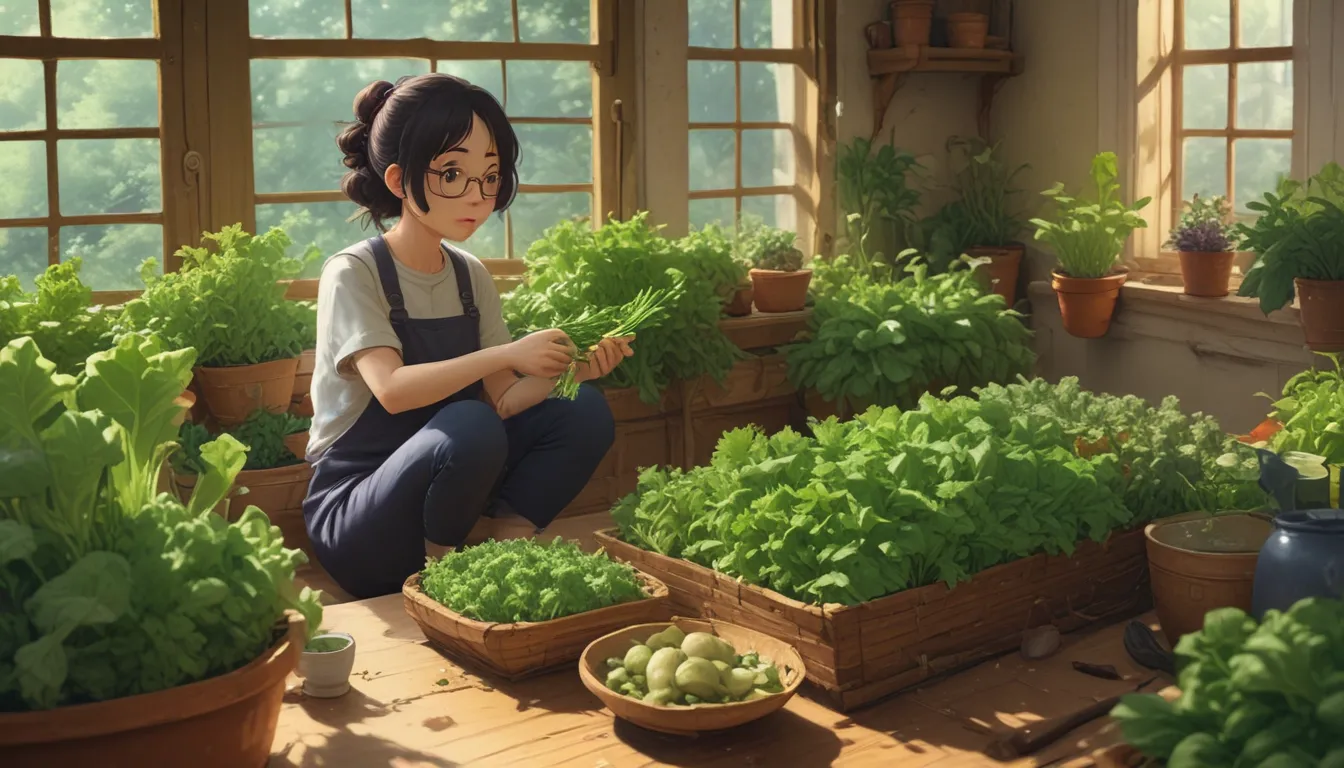Enjoying Kohlrabi Greens: Harvesting, Cooking, and Storing Tips

Kohlrabi, the underrated superstar of the vegetable world, offers more than just its delicious bulbs. The large edible leaves of the plant are a culinary delight, perfect for sauteing, steaming, or adding to salads.
In this comprehensive guide, we’ll take you through everything you need to know about harvesting, cooking, and storing kohlrabi greens. So let’s dive in and discover how you can make the most of this versatile vegetable!
Why Kohlrabi Deserves Your Attention
Kohlrabi is prized for its crisp bulbs that are crunchy and flavorful, with a taste that falls somewhere between broccoli and cabbage. While the bulbs often steal the show, the greens are equally delicious and nutritious.
If you’re curious about the best ways to store and prepare kohlrabi bulbs, look no further than our companion site, Foodal, for a helpful guide.
But for now, let’s focus on the tasty greens of this subtly beautiful plant, which can be harvested and cooked in ways reminiscent of kale or collards.
Quick and Easy Harvesting Tips
Kohlrabi is a fast-growing plant that rewards you with ample foliage. You can start harvesting the young leaves once they reach a desirable size, usually about six weeks after planting. The best time to harvest is during cool weather in spring or fall, as the leaves are especially flavorful then.
To harvest, simply cut the outer leaves as needed, making sure not to take more than a third of the plant at a time. It’s crucial to leave enough leaves attached for photosynthesis if you plan to harvest the bulbs later on.
And don’t worry about the older leaves – while they may be slightly tougher, they’re still delicious when cooked thoroughly. Kohlrabi is also great for succession planting, allowing you to enjoy a continuous harvest throughout the season.
For a step-by-step guide to growing kohlrabi, check out our complete growing guide.
Storing Your Greens
Fresh is best when it comes to kohlrabi greens, but if you need to store them, place the unwashed leaves in a perforated bag in the crisper drawer of your fridge. If the leaves are still attached to the bulb, remove them and store separately. Wash the greens right before using them to preserve their freshness.
If you find yourself with an abundance of greens, freezing is an excellent option for extended storage. After blanching and cooling the leaves, pack them into freezer bags, making sure to remove excess water. For individual portions, consider freezing in muffin tins for easy use later on.
When you’re ready to cook, simply drop the frozen greens into your dishes without defrosting – it’s that easy!
Cooking Tips for Perfectly Delicious Greens
Preparing kohlrabi greens is a breeze, with cooking methods similar to those used for other leafy greens like kale or collards. Before cooking, remove the tough center ribs, wash thoroughly, and chop as desired.
Whether you prefer stir-frying, sauteing, adding to soups, or enjoying them raw in a salad, kohlrabi greens are a versatile ingredient that can elevate any dish. For a flavorful recipe featuring kohlrabi greens, try substituting them in this delicious creamed collards dish from Foodal.
And for those tougher leaves, why not use them to create a delicious wrap? Foodal’s recipe for collard wraps with a quinoa and cashew cream filling is a must-try, with the option to swap in kohlrabi leaves for a unique twist.
Two Vegetables for the Price of One!
With kohlrabi, you get the best of both worlds – delicious bulbs and flavorful greens. Harvesting and cooking the leaves not only adds variety to your meals but also ensures you make the most of this versatile plant.
Share your favorite ways to enjoy kohlrabi greens in the comments below, and be sure to explore these additional resources for more kohlrabi inspiration:
- 11 of the Best Kohlrabi Varieties to Grow Your Own
- 9 of the Best Companion Plants for Kohlrabi
- Health Benefits of Kohlrabi
- How to Plant Kohlrabi Seeds
Now that you’ve mastered the art of harvesting, cooking, and storing kohlrabi greens, let your culinary creativity soar and explore the many delicious possibilities this versatile vegetable has to offer.





